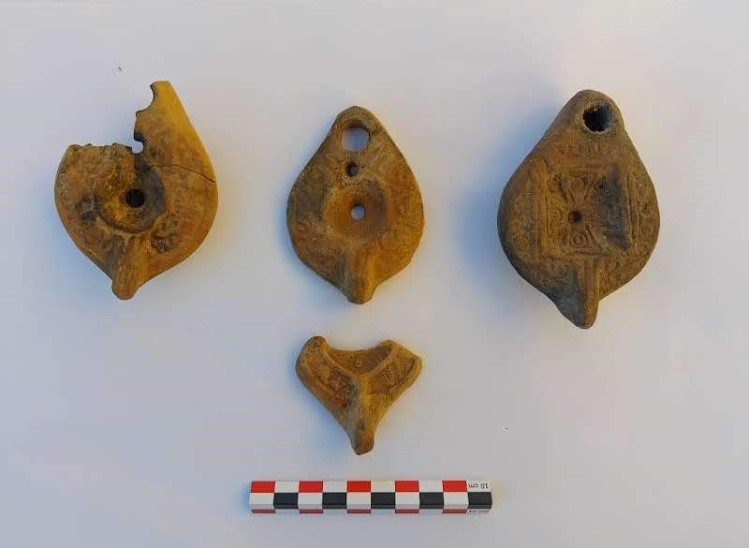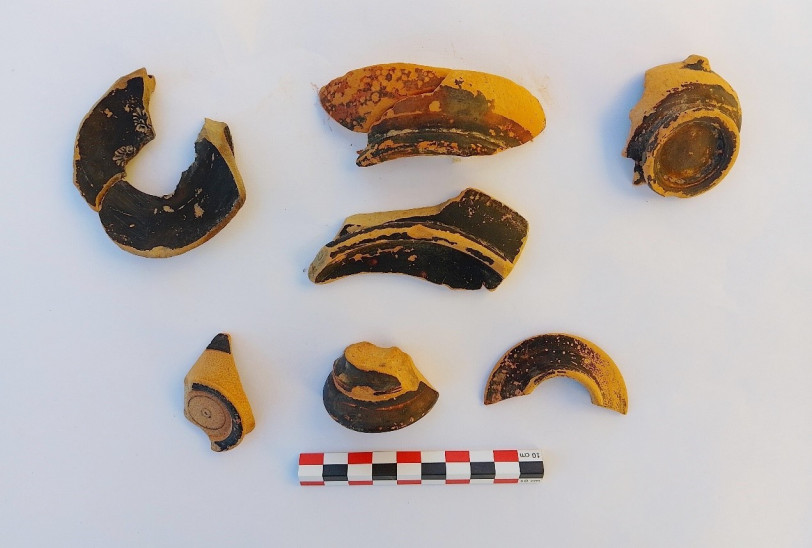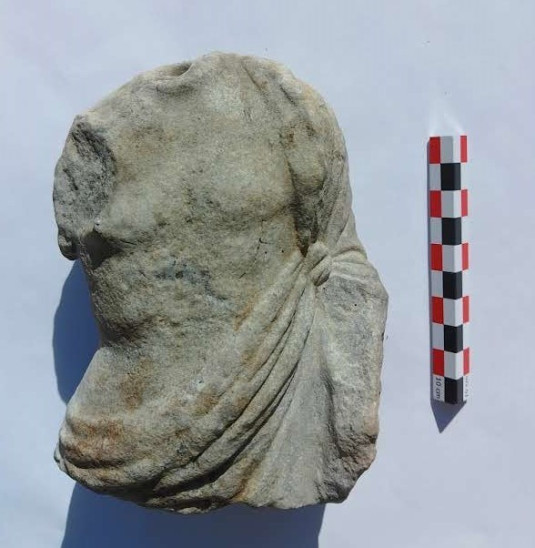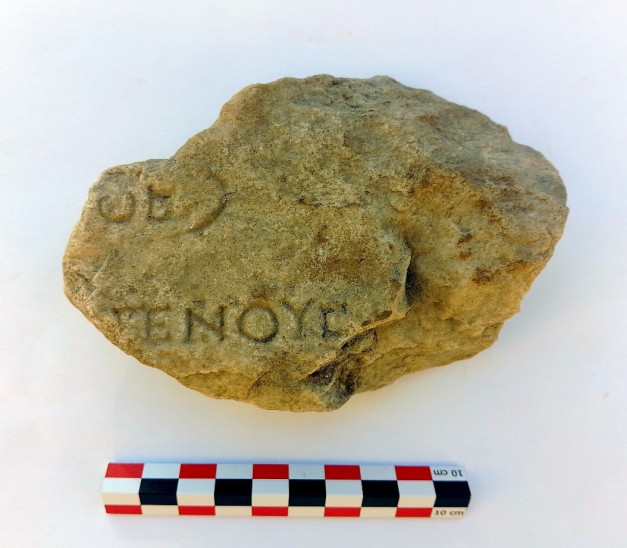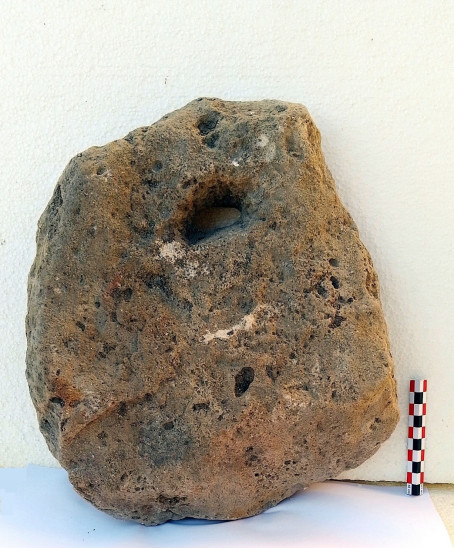The 2023 underwater survey was successfully carried out by a 12-member team and developed in the north-west side of the current Ampelaki Bay
In November-December 2023 it continued, for the eighth consecutive year, within the framework of a new five-year program (2023-2027) underwater research on the eastern shores of Salamis by the Institute of Marine Archaeological Research (I.EN.A.E.), with the assistance of the Ephorate of Marine Antiquities (E.E.A.) of the Ministry of Foreign Affairs, under the direction of Yannos G. Lolos, Emeritus Professor of Prehistory of Archeology of the University of Ioannina and member of the Board of Directors. of I.EN.AE., and Ms. Angeliki G. Simosi, Head of the EFA. Piraeus and Islands, with the main collaborator Dr. Christina Marabea, as field and documentation manager, and Nikos Golfis, as technical manager, and with the participation of archaeologists, other experts and technicians. It is about for the first interdisciplinary underwater researchwhich is systematically conducted (since 2016) by Greek organizations, in areas of the historic Strait of Salamis, specifically in the sea area of Ampelaki-Kynosoura.
The 2023 underwater survey was successfully conducted by a 12-member team and progressed on the north-west side of the current Ampelaki Bay, where sunken remains of the Classical city of Salamis on the southern side of the Punta Peninsula have been intensively researched in recent years. The remains include large sections of the 3-4 m thick sea wall, reinforced with towers, as well as parts of other public strong structures. Based on the results of the research of the previous years, the course of this wall (of the 4th century BC) has now been determined.
In 2023, the excavation research of a large, long and narrow public building, arranged on the N.-S axis, continued, in the northwest corner of today’s Ormos. and partially submerged, in an area enclosed by the southern and eastern leg of the sea wall of the Classical city.
The method of underwater research
The investigation of the submerged part of the building, adapted to a canvas of 4 x 4 m squares, was carried out in a difficult muddy environment by applying, again, an ‘amphibious’ excavation technique, which combines methods and practices of terrestrial and underwater Archeology and achieved with the installation of a special flexible water barrier and the use of 3 water pumps for the daily pumping of water and the removal of sediments in a sea field of a total area of 190 sq.m.
In today’s marine area being investigated, the revealed building is tracked for a length of 32 m, a width of 6 m, while it is certain that it continues to the north, on the seashore. It includes, as it appears today, a series of 6 to 7 rooms, with spaces open in front, towards the west (ie the facade) and generally presents Stoas characteristics.
The ancient remains, as well as the wall, looted to a very large extent of its construction material from earlier times, are characterized by solid walls, 0.50-0.60 m thick, made of large carved stone blocks, which are preserved today only at the level of one or two buildings and are based on a well-built foundation/subsoil.
With the completion of the 2022-2023 excavation work, two (2) consecutive square rooms (internal dimensions 4.7 x 4.7 m.) and two (2) more have been partially investigated from the row of rooms on the long axis of the building , as well as a side area, open in front, towards the west.
What came out of the research
From the latest investigation, two elements emerged on the western edge of the building of particular interest:
- Section of stone conduit (0.36 m wide), 4.15 m long so far and 3.50 m apart parallel to the western long wall of the building, apparently for the drainage of rainwater from the roof, and
- Possible stone horseshoe-shaped column base (0.76 x 0.64 m.), with a thickness of 0.40 m., at a point a little further south.
From the excavation investigation of the large public building, a number of movable finds emerged. A large quantity of pottery of various periods was collected, some of which, however, mainly of the Late Roman/Early Byzantine and Medieval-Later periods, is undoubtedly a mixed accumulated material, drifted from time to time from the wider land area.
The ceramic findings related to the building’s function include abundant fragments of vases of various categories and ceramics from the Classical-Hellenistic period, among them many samples of Athenian enamel pottery from the Late Classical period (4th century BC). Among other things, many sherds of amphorae, prohons, red-painted paintings, 1-2 intact lamps and fragments of other items from the Late Roman period (up to the 6th century AD) can be found in the ceramic material brought.
In the rest of the movable finds from the excavation include: sealed handle of a Hellenistic commercial amphora, 95 clay objects (mostly amphora caps, but also a few sparks and weights), 6 bronze objects, 25 stone (and some marble) objects, whole or in pieces, 2 luxury fragments marble vessels (basin/circular and bank), also 30 bronze coins, of which most of the late 4th – early 3rd c. e.g. (like many of the 2022 excavation), coming from the one square room (of commercial use?), with a large storage pit to the N.W. angle of
Three marble findings are considered particularly important:
- Two fragments of columns with fragmentary inscriptions. One, from Roman times, is a list of names and preserves part of three verses, with names and patronymics. The other, quite worn, from the Classical-Hellenistic period, preserves part of five verses and is possibly of the same character, according to initial estimates.
- Fragment of a statue of a standing male figure, with a robe (total height 15.5 cm). It is a statuette of Asclepius, of a well-known and widespread type (‘Asclepius Este’), based on parallels from Epidaurus (e.g. in E.A.M., No. 265) and from other places, of the advanced 4th c. e.g. According to epigraphical and other testimonies, the worship of the god is also documented in the region, at least from the Hellenistic times and the teenagers, in the context of the Athenian festival of Aianteia, offer sacrifices in the city of Salamis, not only to Aedas, but also to Asclepius.
Finally, beyond the new epigraphic evidence and the number of various objects, the excavation also yielded a remarkable find of a naval nature. A small stone slab-shaped anchor (36 x 29 cm, 8.5 cm thick), with a hole for the mooring rope, found, together with carrying material, outside the building boundary. This is the second maritime find to be found in the wider area of the ancient port, after the stone anchor, but of a different type, from an earlier rescue land excavation at the mouth of the Ambelaki Cove (exhibited, today, in the Archaeological Museum of Salamis, No. 148).
The data obtained from the 2023 excavation further highlights the importance of the great building as a public edifice for the study of the topography and settlement of the ancient city of Salamis, as its position probably defines the eastern side of the Agora area of the Classical-Hellenistic city, close to the port, the parts of which were seen and described (as ‘market ruins’) by the traveler Pausanias (1.35.3) around the middle of the 2nd century. A.D.
Who participated in the survey?
Giannos G. Lolos and Angeliki G. Simosi (Director of research), Christina Marabea (Dr. of Archaeology, responsible for field work and documentation), Nikolaos Golfis (M.C. Tool Systems), Theodora Deligianni (Chemical Engineer), Anna Notia (Educator) , Louiza Dimitriou and Thomas Iosifidis (Archaeologists), Evangelos S. Kroustalis (Dr. of Archaeology, responsible for photogrammetric impressions), Chrysa Fuseki (Head of the E.E.A. Maintenance Department) and Irini Malliou (E.A.E. Conservator), Spyros Ayazi and Frederikos Capai (Workers), Konstantinos Tsitlakidis (Night watchman of the work area).
Thanks are due to Dr. Eleni Banou, Head of the Ephorate of Marine Antiquities, for assistance and cooperation, and to Mr. Charalambos Kritzas, Honorary Director of the Epigraphic Museum, for his authoritative opinion on the epigraphic and other marble finds and cooperation in general , as well as to the sponsors-supporters of the 2023 research: G. Arvaniti, Eleni and Anthi Bekri, I. P. Theodoropoulos, A. Martino (AEGEAS Company), Shareholder of the Holy Episcopal Monastery of Agia Skepi Keratea (d. Athanasios and N. Sardeli ), A. Koutsiaris, K. Katsigianni and N. Tsakalides, S. Fourikis and D. Stanotas, G. Kampos, N. Tzanoudakis, D. Koumbloudeli, K. Tsitlakidis, S.-E. Lolos, I. Fragopoulos, F. Karakosta and the kathari-zw group (K. Margelou).
Source :Skai
I am Frederick Tuttle, who works in 247 News Agency as an author and mostly cover entertainment news. I have worked in this industry for 10 years and have gained a lot of experience. I am a very hard worker and always strive to get the best out of my work. I am also very passionate about my work and always try to keep up with the latest news and trends.


